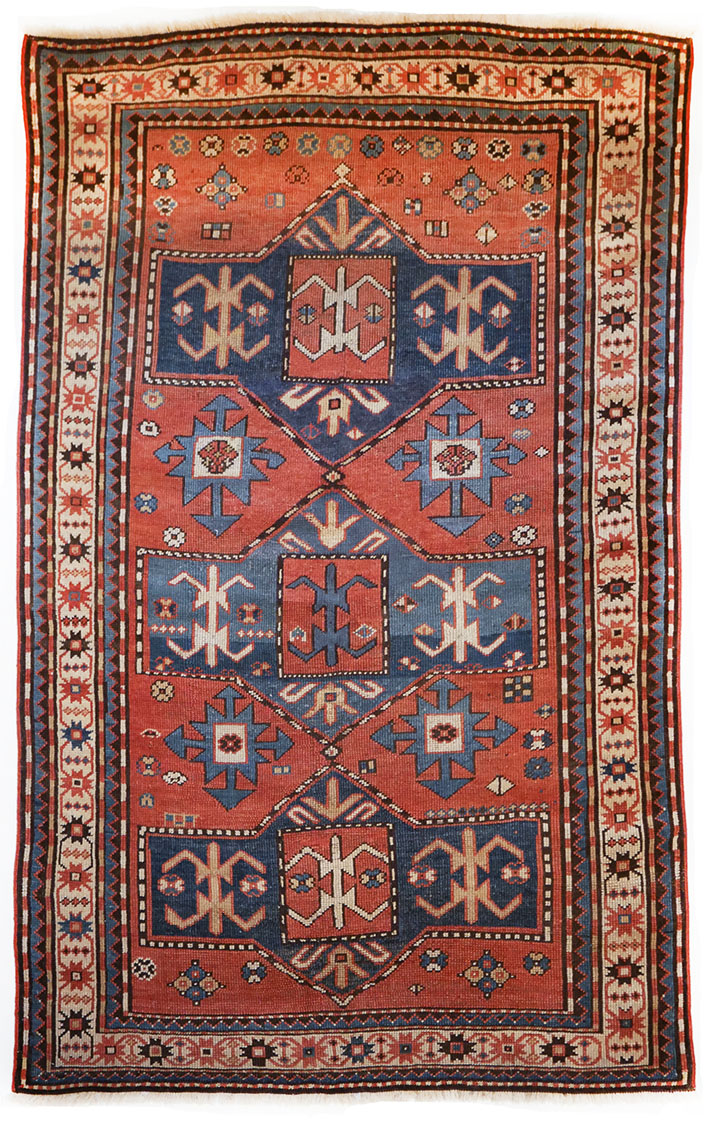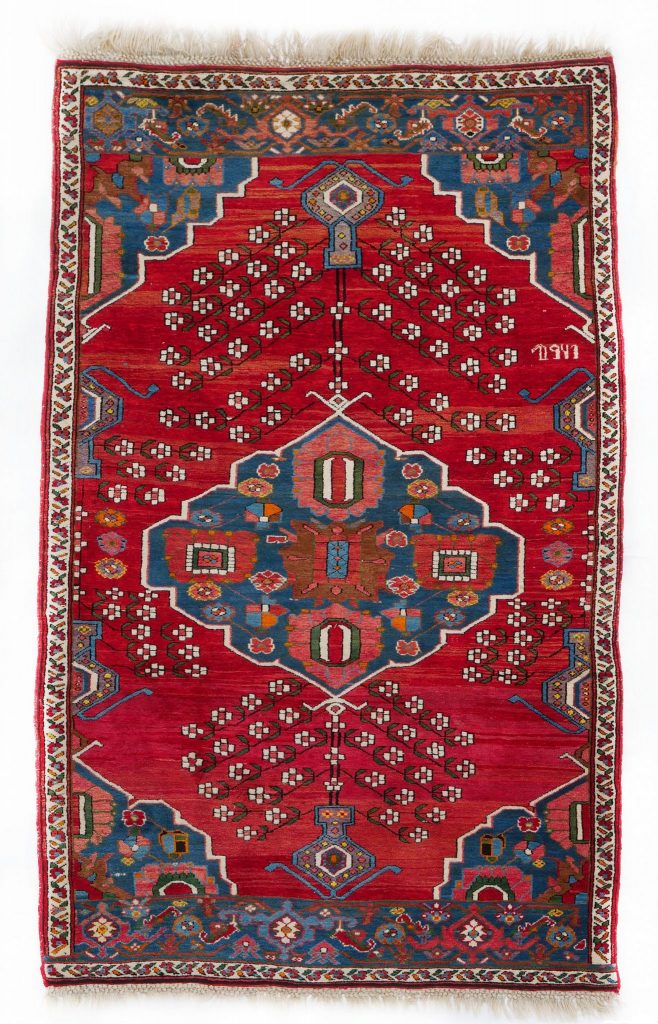
Karabakh carpet school are rugs produced in Karabagh, a great center of wool and cotton processing since ancient times, and neighbouring villages in south-west of modern Azerbaijan
Shusha played formerly the main role in carpet weaving in the region. Founded in the 18th century by the khan of Karabakh Panahali
Shusha was a dynamic multicultural center with both Christians and Muslims artisans developing new carpets designs; “Chini-cheshni”, “Bagchadaguller”, “Sakhsidaguller” and “Bulud” ‘ ..,the decorations of which were taken from packing papers of aromatic soaps, prints and other every-day life items brought from Russia and Europe.” (source: https://en.azvision.az/news/9409/the-develpoment-of-carpet-weaving-in-azerbaijan–photos.html)
‘Marko Polo stressed the beauty of the silk wares of Shemakha and Barda in the 13th century. English traveler -merchant Antoni Djenkinson wrote depicting the magnificence of the summer residence (the 16th century): “the king was sitting in the rich tent worked with silk and golden thread; his clothes were all in pearls and precious stones”.’ (source: http://files.preslib.az/projects/azerbaijan/eng/gl5.pdf).

The most collectible Karabagh rugs are those coming from the villages of Chondoresk and Chelaberd.
Chondoresk is home of the so-called ‘Cloudband’ Kazaks; Chelaberd is renowned for the Eagle or Sunburst kazaks
Both the Cloudband and the Aegle (Sunburst) kazaks cannot be attributed to the Kazak school ; they were referred to as Kazaks by many merchants in the past, however they belong distinctly the Karabagh school of rugs.


Many Karabagh carpets bear characteristics of other iconic Caucasian and non Caucasian rugs, they are identified however by the unique use of dark brown weft.
Below, see a rare antique rendition of e Eagle (Sunburst) Karabagh rug heavily influenced by the Borchalou pattern and motifs in our collection.
Below, a two-lozenge pole medallion set in brilliant sunset red featuring the so-called ‘gul frange’ – French or simply foreign rose very popular in the region from 1880s onwards (in our collection).

‘ A special group of patterns is represented, appearing in the first half of the nineteenth century, by those carpets from Karabagh, Kuba, and Derbend which were knotted for the French-style furnishings of Russian and rich native patrons, with rows of little bunches of roses – often in medallion or rocaillerie frames.’ (-) Reinhard G.Hubel The Book of Carpets (Praeger Publishers, New York 1970)

to be continued …


